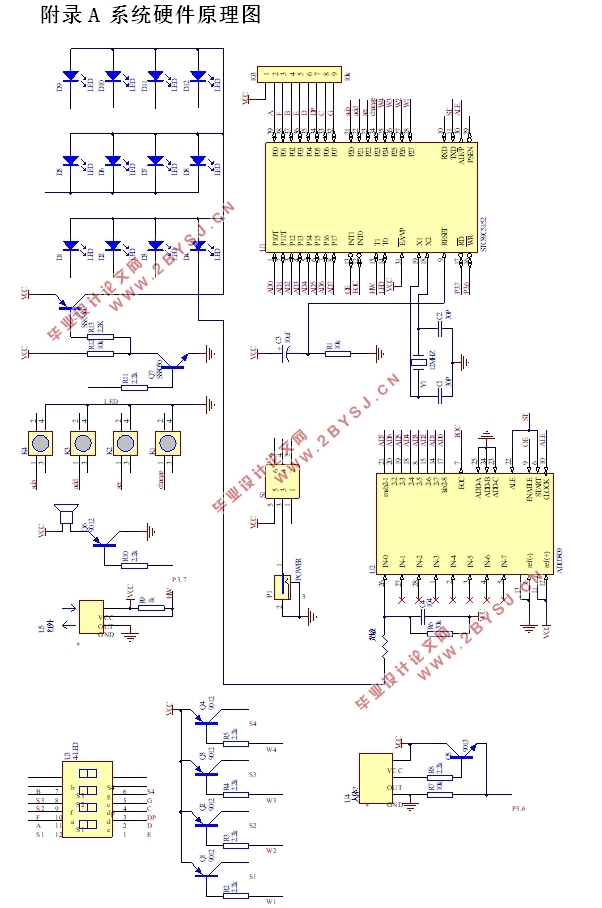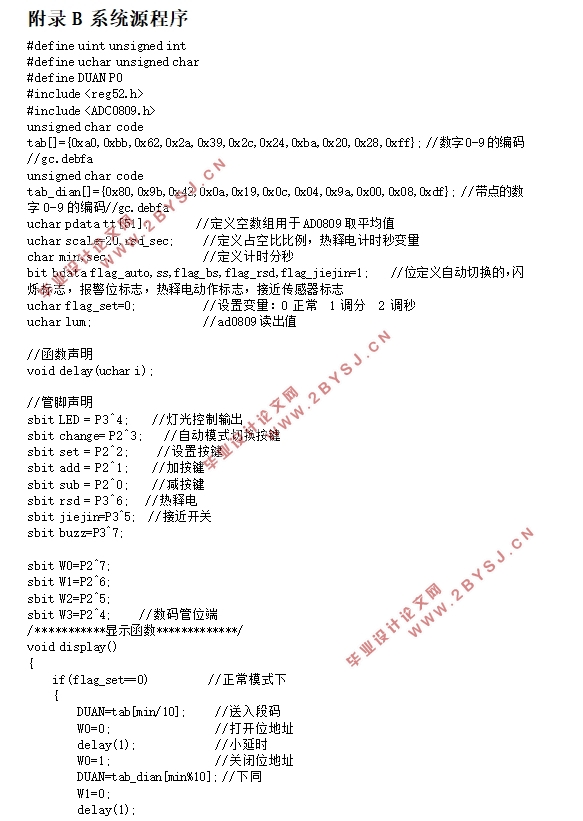基于单片机的智能照明控制系统设计(附原理图,程序代码)
无需注册登录,支付后按照提示操作即可获取该资料.
基于单片机的智能照明控制系统设计(附原理图,程序代码)(任务书,开题报告,论文12000字)
摘要
本文设计了基于STC89C52单片机的智能家居照明系统,在日新月异的今天,人们已经不满足普通的照明开关方式,更加重要的是能源短缺这一困扰了我们多年的难题,摆在我们眼前,除了寻找新兴代替能源,如何提高现有能源的使用效率与节约能源也是需要重视的。本设计的智能照明系统可以通过按键在两种模式中任意转换,除了拥有开机时的默认手调模式以外还可以转换成更高阶的感应模式,默认模式下只能够通过按键来实现开关以及调节灯光的强弱,而在感应模式下就可以根据附近是否有人来判断照明系统的开关并且根据环境光线的强弱调节灯光的强度。
关键词:智能照明系统 单片机 光敏电阻 人体感测 红外测距
ABSTRACT
This article designed based on STC89C52 single-chip intelligent home lighting system, in the ever-changing today, people already do not meet the ordinary way of lighting switch, more important is the energy shortage that plagued our many years of problems, placed in front of us, in addition to looking for new Instead of energy, how to improve the efficiency of the use of existing energy and energy conservation is also need to pay attention. The design of the intelligent lighting system can be any key in the switch mode, in addition to the default boot mode with the boot can also be converted into a higher order of the induction mode, the default mode can only be achieved by pressing the button and adjust the switch The intensity of the light, and in the sensor mode can be based on whether someone in the vicinity to determine the lighting system switch and according to the strength of the ambient light 7 to adjust the intensity of light.
Keywords:Intelligent lighting system;single - chip;human sensing; photoelectric;distance measurement



目录
摘要 I
ABSTRACT II
第一章 绪论 1
1.1 引言 1
1.2 本论文主要任务 1
1.3 论文结构安排 2
第二章 功能模块简介 3
2.1人体感应模块简介 3
2.2 光敏电阻模块简介 4
2.3 红外传感器报警模块简介 6
第三章 智能照明系统的设计 8
3.1 系统总体方案的设计 8
3.2 单片机的设计 9
3.3 上拉电阻设计 10
3.4 A/D转换的设计 11
第四章 智能照明系统的硬件实现 13
4.1 最小单片机系统 15
4.2 A/D转换与STC89C52的接口电路 15
4.3 环境光线检测电路的设计 16
4.4 按键控制的电路设计 17
4.5 灯光控制电路设计 18
4.6 电源电路设计 19
4.6 LED显示电路 19
第五章 软件设计 21
5.1 主程序的设计 21
5.2 计时程序设计 22
5.3 数码管显示程序设计 23
5.4 ADC0809转换程序设计 24
第六章 系统调试 25
6.1 硬件调试 25
6.2 软件调试 26
6.3 综合调试 28
第七章 论文总结 29
7.1 总结 29
7.2 展望 29
参考文献 31
附录A 系统硬件原理图 33
附录B 系统源程序 34
致谢 42
